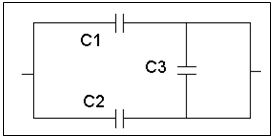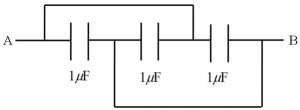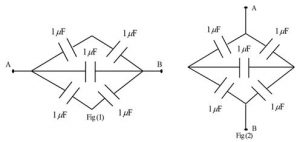Class 12 Physics chapter 2 Electrostatic Potential & Capacitance important ques and Ans
CBSE Class 12 Physics chapter 2 Electrostatic Potential & Capacitance important ques and Ans
Student can find here Subject matter experts of Result4u have developed chapter wise important practice questions of CBSE Class 12 physics chapter 2 Electrostatic Potential and Capacitance as per the relevancy of the chapter in the CBSE board exam. This practice set contains 10 questions with detailed explanations on “Chapter: Electrostatic Potential and Capacitance” of Physics.
Q1.Three different capacitors are connected in series. Then:
A) They will have equal charges
B) They will have same potential
C) Both 1 & 2
D) None of these
Q2.If Q is the charge on the capacitor and E is the electric field intensity between the plates, then the force between the plates of a capacitor is
A) QE
B) 2QE
C) QE/2
D) QE/4
Q3.A hollow metal sphere of radius 10 cm is charged such that the potential on its surface is 80 volt. The potential at the centre of the sphere is:
A) 8 volt
B) 800 volt
C) 80 volt
D) Zero
Q4.The equivalent capacity of the combination shown in the figure is: (given C1 = C2 = C3 = C)

A) 2C
B) C
C) C/2
D) None of these
Q5.A regular hexagon of 0.1 m has a charge 1 μ C at each of its vertices. What is the value of electric potential at the center of the hexagon?
Q6.What is the equivalent capacitance of the arrangement of the capacitors shown below?

Q7.Three capacitors each of capacity 4 µF are to be connected in such a way that the effective capacitance is 6 µF. This can be done by:
Q.8: The equivalent capacitances of Fig (1) and Fig (2) given below are:

Q9.If there are n capacitors each of capacitance C are connected in parallel to a voltage source of V, then the total energy stored is equal to: